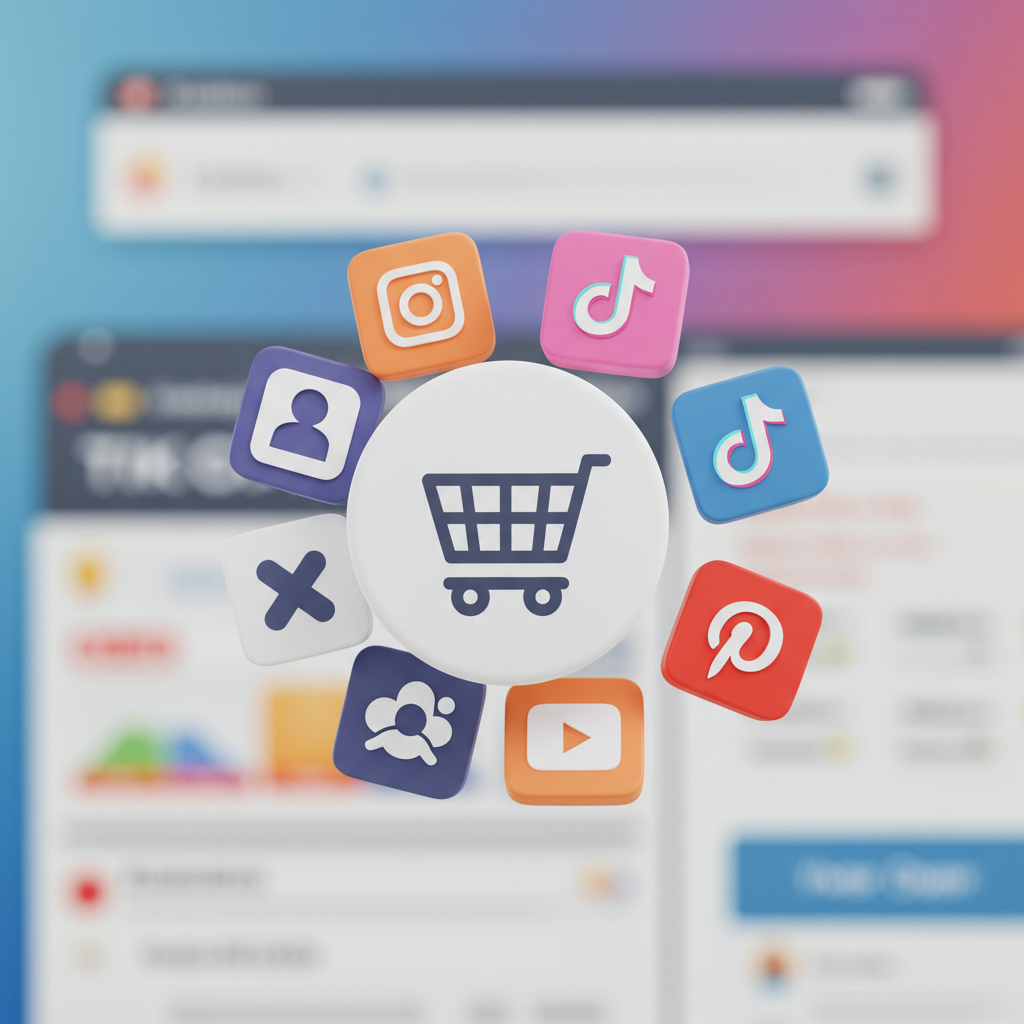Unlocking Growth: Tailored Strategies for Every Major Platform
As a Shopify merchant, you’re constantly looking for ways to expand your reach and connect with potential customers. I’ve seen firsthand how powerful social media can be in transforming a small online store into a thriving brand. It’s not just about posting; it’s about strategic engagement.
In my experience, the key to success lies in understanding that each social media platform is a unique ecosystem with its own culture, audience demographics, and best practices. What works wonders on Instagram might fall flat on LinkedIn, and vice versa.
My goal with this guide is to walk you through the specific strategies I recommend for leveraging the most popular social media channels to drive traffic, build community, and ultimately, boost sales for your Shopify store.
Before we dive into individual platforms, let’s establish a few overarching principles. Consistency is paramount. Your brand voice should be clear and consistent across all channels, reflecting your store’s personality and values.
Secondly, know your audience. Who are you trying to reach? Understanding their demographics, interests, and online behavior will inform your content strategy and help you choose the most effective platforms.
Finally, remember that social media is a two-way street. It’s not just about broadcasting your message; it’s about listening, engaging, and building genuine relationships with your customers.
Let’s start with **Facebook**. Despite newer platforms emerging, Facebook remains a giant, especially for community building and targeted advertising. I find it excellent for reaching a broad demographic.
For your Shopify store, I recommend setting up a Facebook Shop directly integrated with your product catalog. This allows customers to browse and purchase your products without ever leaving Facebook, creating a seamless shopping experience.
Utilize Facebook Groups. If you can create or join relevant groups where your target audience congregates, you can establish yourself as an expert and subtly introduce your products. Avoid overt spamming; focus on providing value.
Facebook Ads are incredibly powerful due to their detailed targeting options. I always advise merchants to experiment with retargeting ads for website visitors and lookalike audiences based on your existing customer data.
Next, **Instagram**. This platform is a visual powerhouse, making it ideal for showcasing products, especially those with strong aesthetic appeal. I consider it indispensable for fashion, home goods, and beauty brands.
High-quality visuals are non-negotiable here. Invest in professional product photography and lifestyle shots. Use Instagram Shopping tags on your posts and Stories to make products directly shoppable.
Reels and Stories are crucial for engagement. I encourage merchants to use Reels for short, dynamic product demonstrations, behind-the-scenes glimpses, or trending audio challenges. Stories are great for polls, Q&As, and limited-time offers.
Influencer marketing thrives on Instagram. Collaborating with micro-influencers whose audience aligns with your brand can yield impressive results. I always look for authentic connections over follower count.
Now, **TikTok**. This platform is all about short-form, authentic, and often humorous video content. It’s a fantastic channel for reaching younger demographics and going viral.
My advice for TikTok is to embrace trends, but always put your own brand’s spin on them. Don’t be afraid to be playful and show the human side of your business. Product demonstrations that are entertaining rather than purely promotional tend to perform best.
TikTok Shop is rapidly expanding, offering direct in-app purchasing. If your products fit the platform’s vibe, I highly recommend exploring this feature for direct sales integration with your Shopify store.
**Pinterest** is often overlooked, but it’s a goldmine for discovery and purchase intent. Users come to Pinterest specifically to find inspiration and plan purchases, making it a powerful tool for Shopify merchants.
I always tell my clients to treat Pinterest like a visual search engine. Optimize your pin descriptions with relevant keywords. Use Rich Pins, which automatically pull product information like price and availability directly from your Shopify store.
Create Idea Pins for tutorials, DIY projects, or styling guides that feature your products. This helps position your brand as a source of inspiration and solutions, not just products.
**YouTube** offers a different kind of engagement: long-form video content. I find it excellent for detailed product reviews, unboxing videos, tutorials, and behind-the-scenes content that builds deeper brand loyalty.
Consider creating “how-to” videos that solve a problem your product addresses. For example, if you sell kitchen gadgets, demonstrate recipes using them. Integrate shoppable links in your video descriptions.
**X (formerly Twitter)** is a real-time platform, best for quick updates, customer service, and engaging in trending conversations. I use it for announcing flash sales, new product drops, and direct customer support.
While not as visually driven for product display, X is excellent for driving traffic to your Shopify store through direct links and engaging with industry hashtags. It’s also a great place to monitor brand mentions.
**LinkedIn** might seem unconventional for a Shopify store, but I’ve seen it work for B2B products or brands that want to establish thought leadership. It’s less about direct sales and more about brand authority and networking.
On LinkedIn, I focus on sharing company milestones, industry insights, and behind-the-scenes glimpses of your team or manufacturing process. This builds trust and credibility, which can indirectly lead to sales.
Regardless of the platform, remember to track your performance. I always advise setting up UTM parameters for your links to accurately measure traffic and conversions coming from each social media channel in your Shopify analytics.
Tools like Buffer, Hootsuite, or Sprout Social can help you schedule posts, monitor mentions, and analyze performance across multiple platforms, saving you valuable time.
In conclusion, social media marketing for your Shopify store isn’t a one-size-fits-all endeavor. It requires a tailored approach for each platform, consistent effort, and a genuine desire to connect with your audience.
I truly believe that by implementing these strategies, you’ll see a significant positive impact on your brand’s visibility and sales. What do you think about these strategies? I’d love to hear your thoughts!






